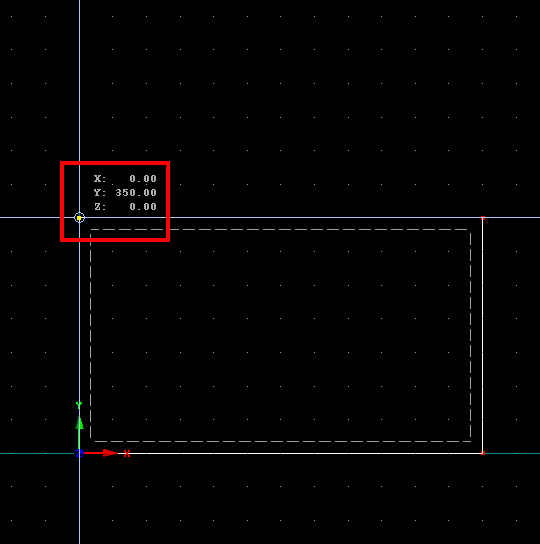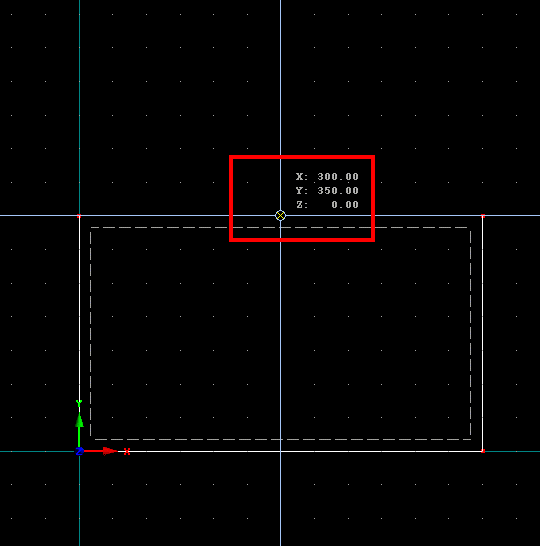A/ A Numerical Input of Values. Edit controls displayed on the Edit Bar can be used to enter some values that are difficult to enter graphically as follows. Using a mouse one defines an approximate shape of an object. Then using a keyboard one enters selected values numerically. While entering values using a keyboard one can not move a mouse, or entered values will be lost. One needs to use the „Tab" key or „Shift + Tab" keys at the keyboard to move forward of backward from one edit controls to another one, respectively. A control of Combo Boxes and Radio buttons is done using a standard way as in dialog windows, i.e., using keys Arrow Up or Arrow Down, etc. After all values are entered one pushes the Enter key to finish the actual step of the running tool.
B/ Adjusting View. When graphically entering objects, one often needs to move or turn the scene, or to enlarge or reduce a selected detail. This can be done without interrupting the input of a particular object. The fastest way is to press the center mouse button (a wheel) and then a) dragging the scene with the mouse move, b) moving forward or backward an object by scrolling the wheel, or c) rotating the scene by simultaneously also pushing the right mouse button. After releasing the center mouse button, one can continue in the graphical input of an object. Similar operations can also be performed using button on the View Toolbar:

A majority of buttons on the View Toolbar do not interrupt the graphical input of an object, i.e., after the adjustment of the View Window on can continue in the graphical input of an object.
C/ Snapping. When entering Points graphically (points created when entering curves or surfaces), a process called Snapping is taking place. This means that a cursor snaps to points of a Grid or to existing points. Snapping can be disabled using a button Snap to Grid on the Tools Toolbar. Snapping on existing points or curves can not be disabled. Snapping occurs when a center of a cursor comes close to an existing point and when this point is redrawn with a yellow color (or any pre-select color assuming that redrawing of preselected points is not switched off). One can simultaneously observe on the Edit Bar that an index of a preselected point and its coordinates are displayed in edit controls. These controls are disabled since displayed values can not be changed. Snapping on curves occurs in addition to Snapping on existing points. An automatic calculation of coordinates of a point on a curve and snapping to this point occurs when a center of a cursor comes close to an existing curve. A location of this point is marked using a yellow cross which indicates that after this point is entered it becomes a definition point of a curve. This is important, since entering a point on a curve that is not its definition point leads to the wrongful definition of a domain. A check of a geometry discovers such errors and the Repair Geometry function will automatically correct it.
Snap to a point:

Snap to a curve:
